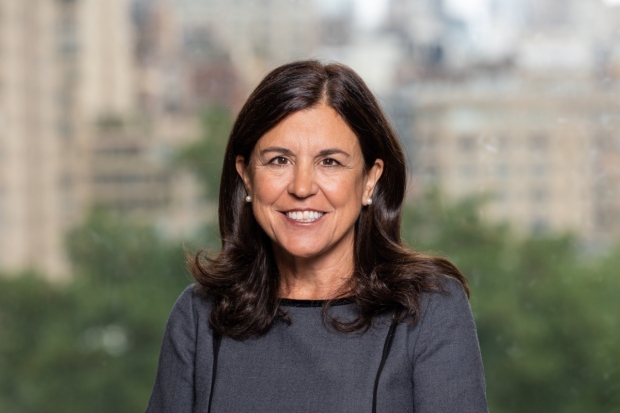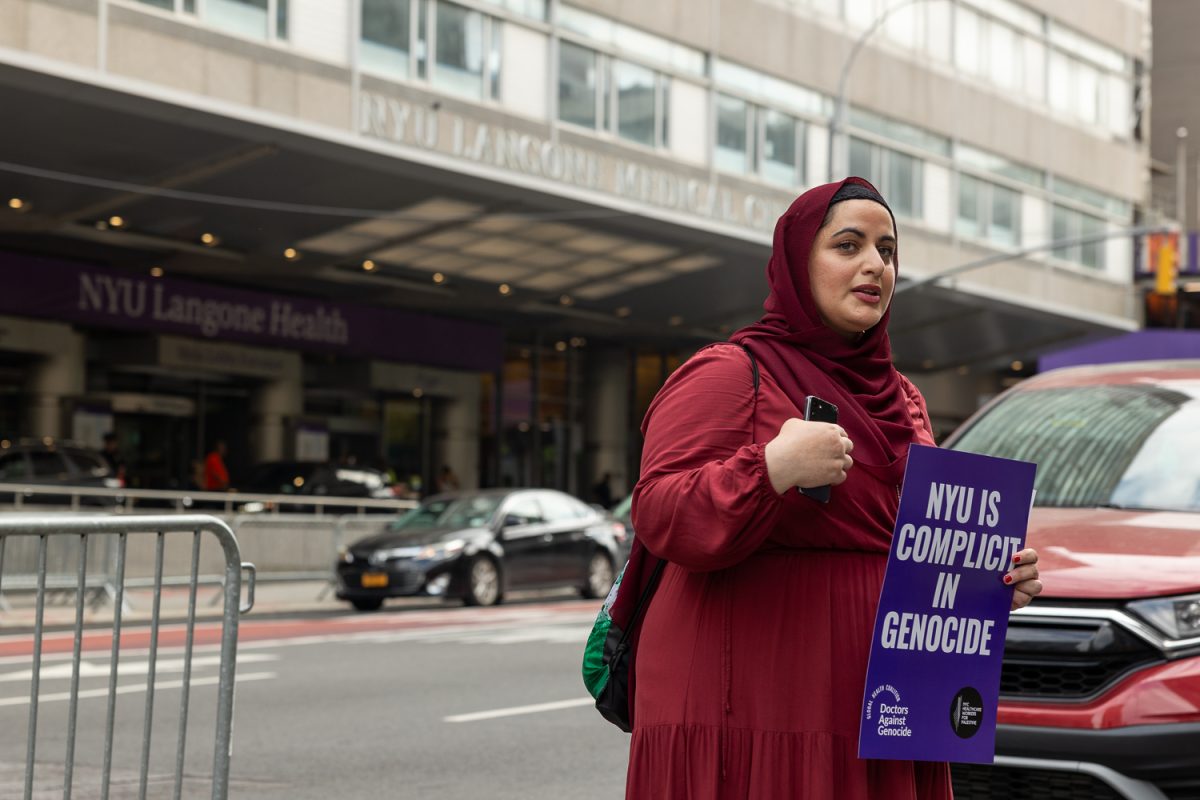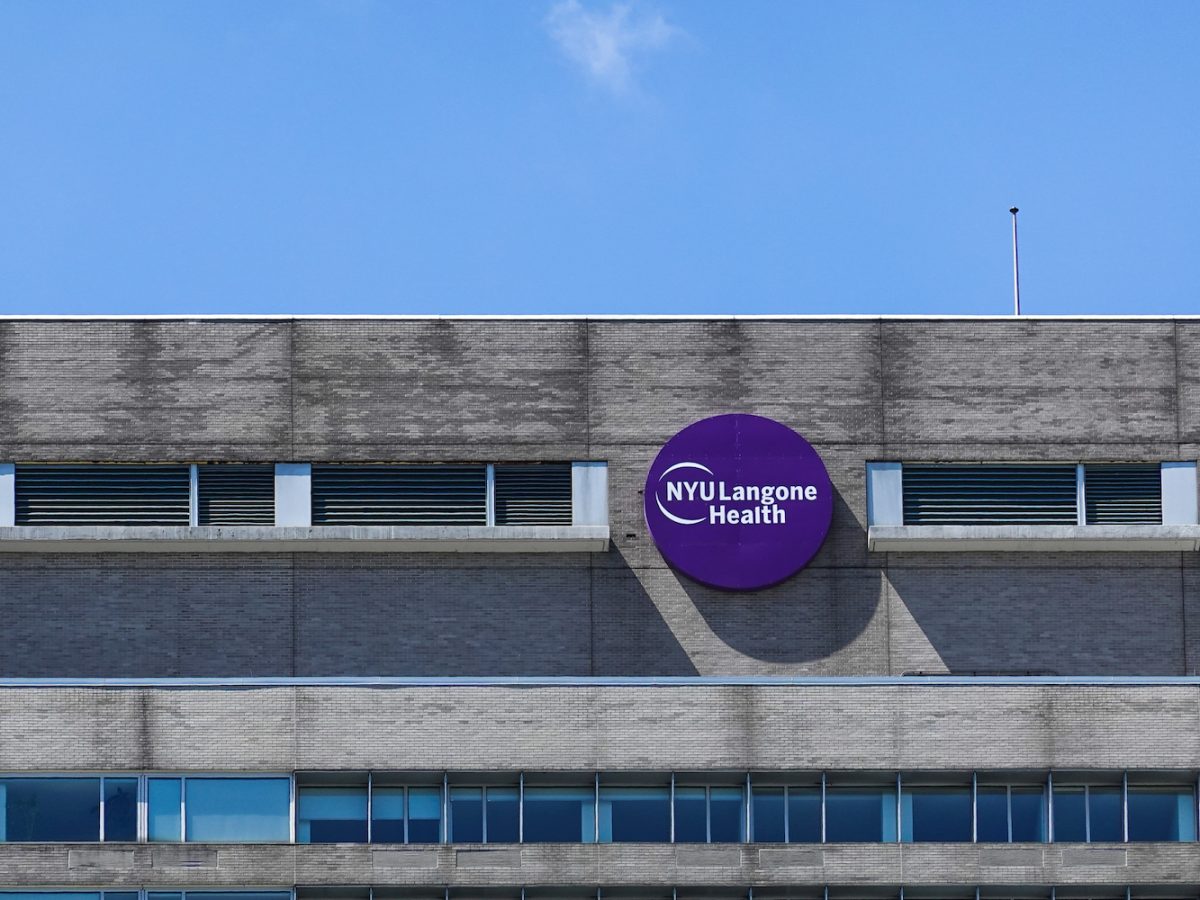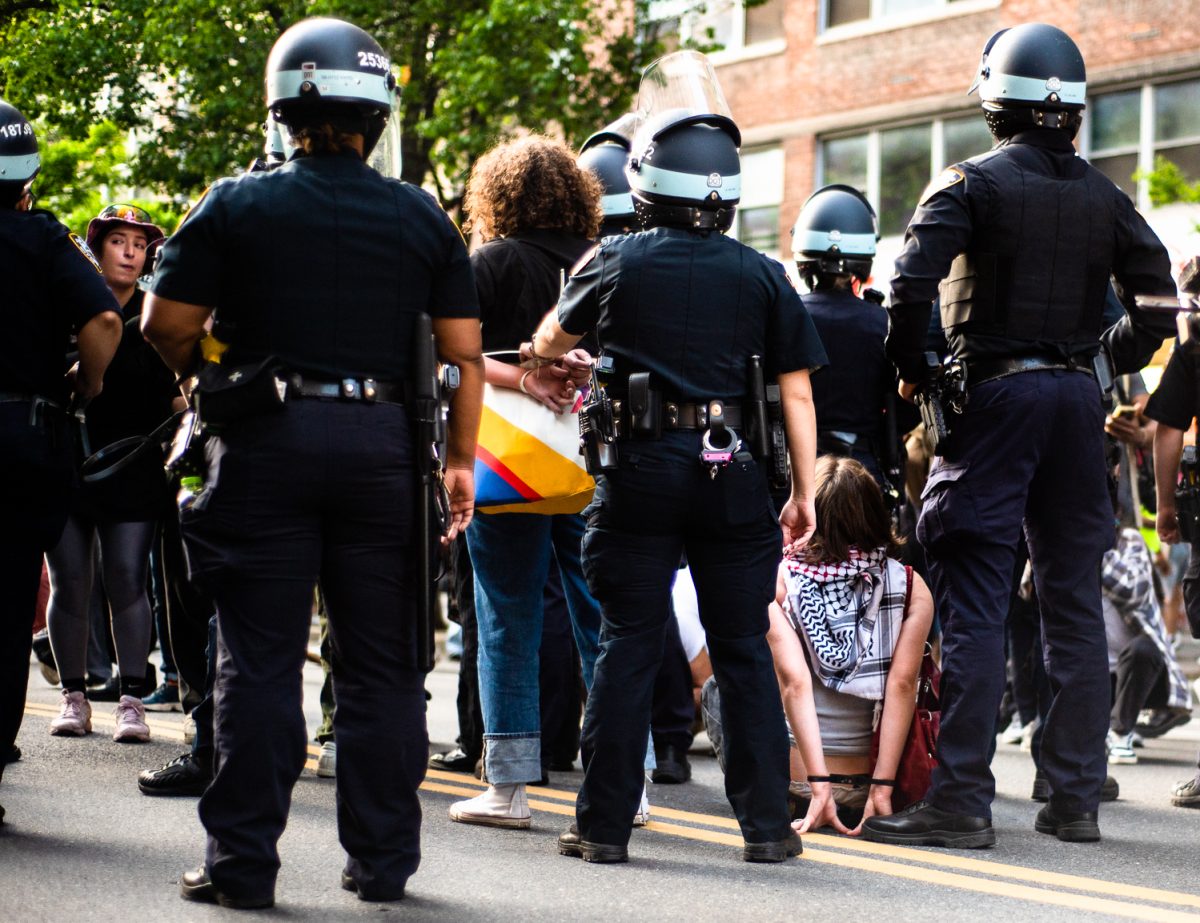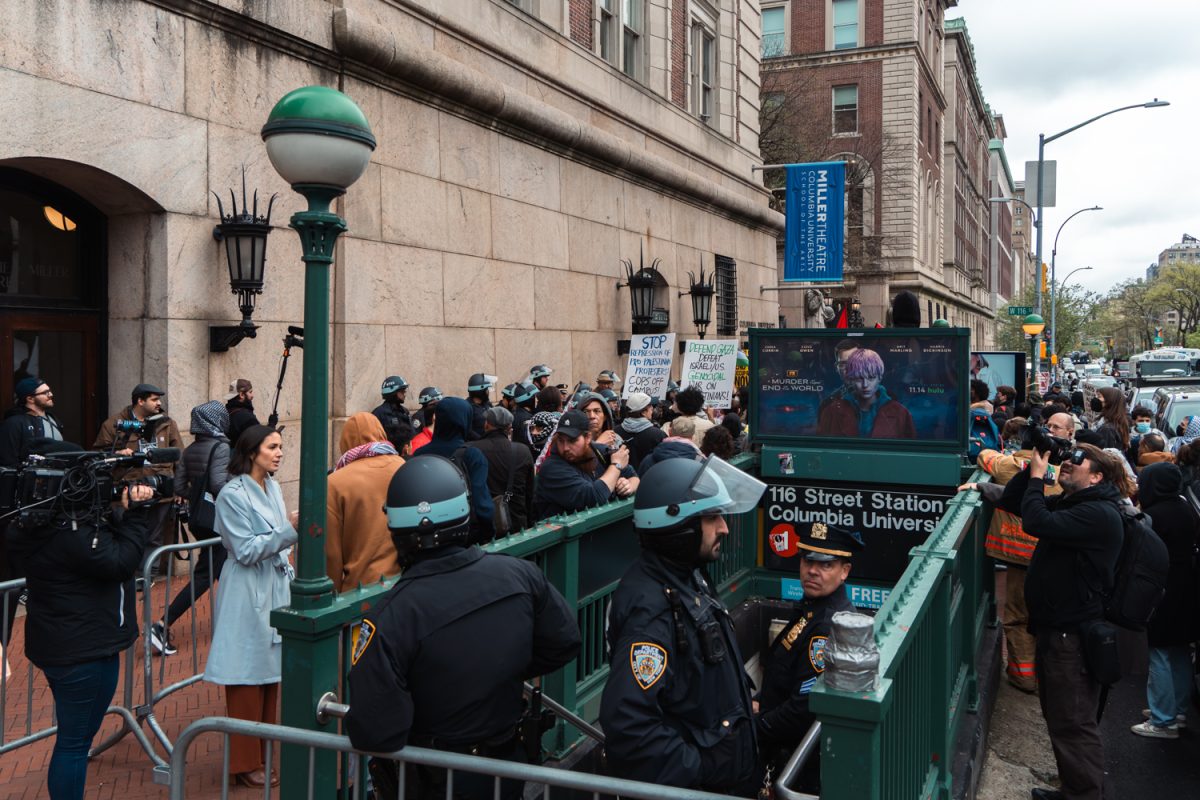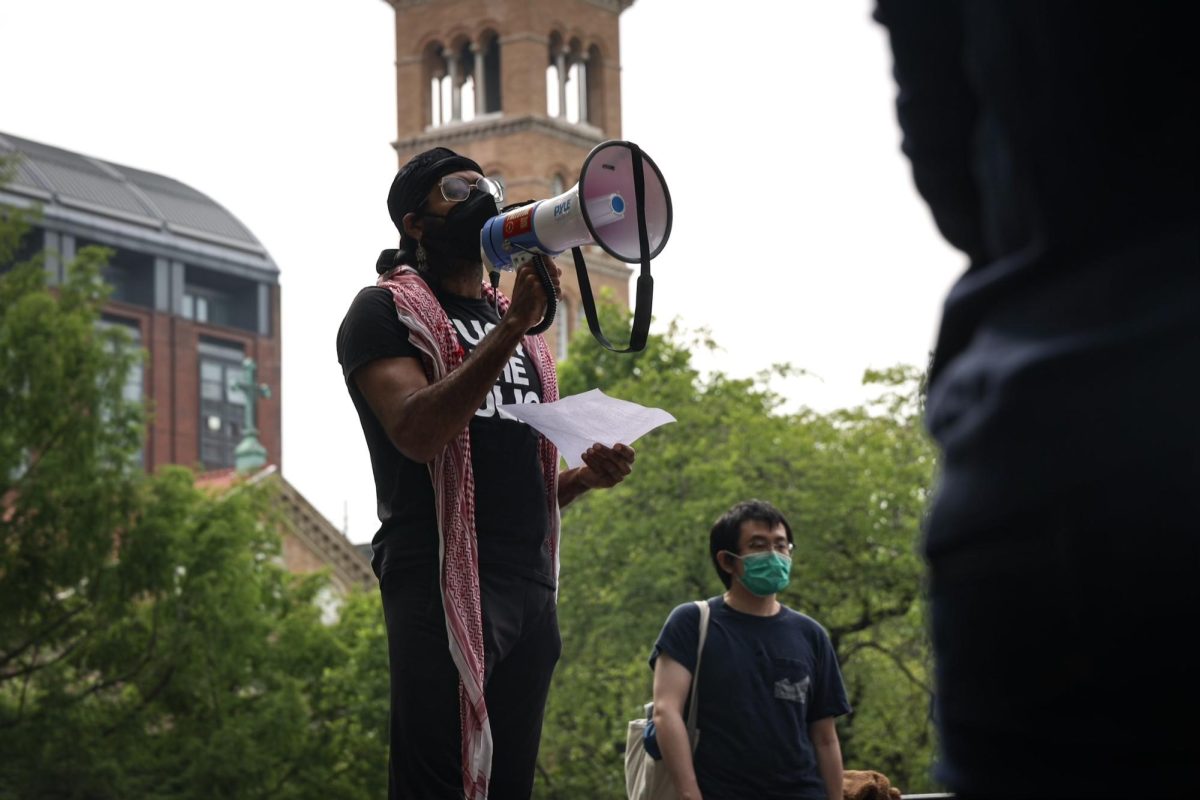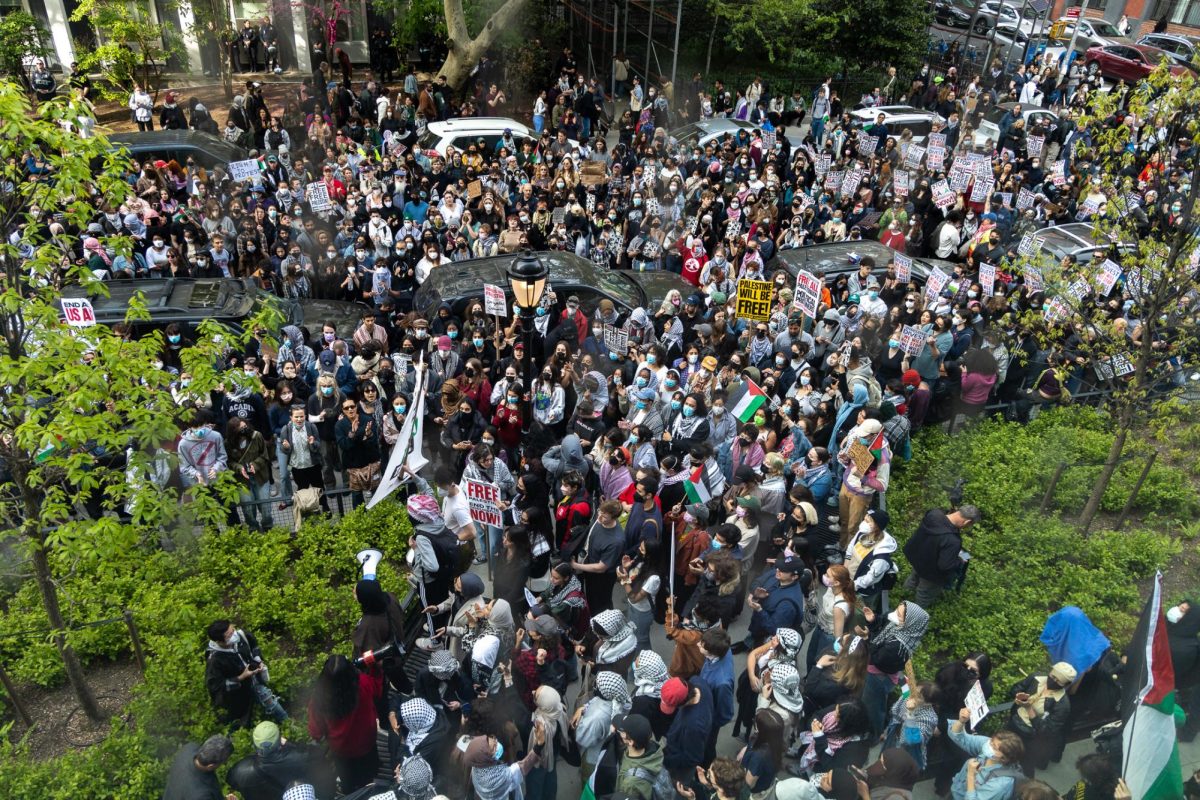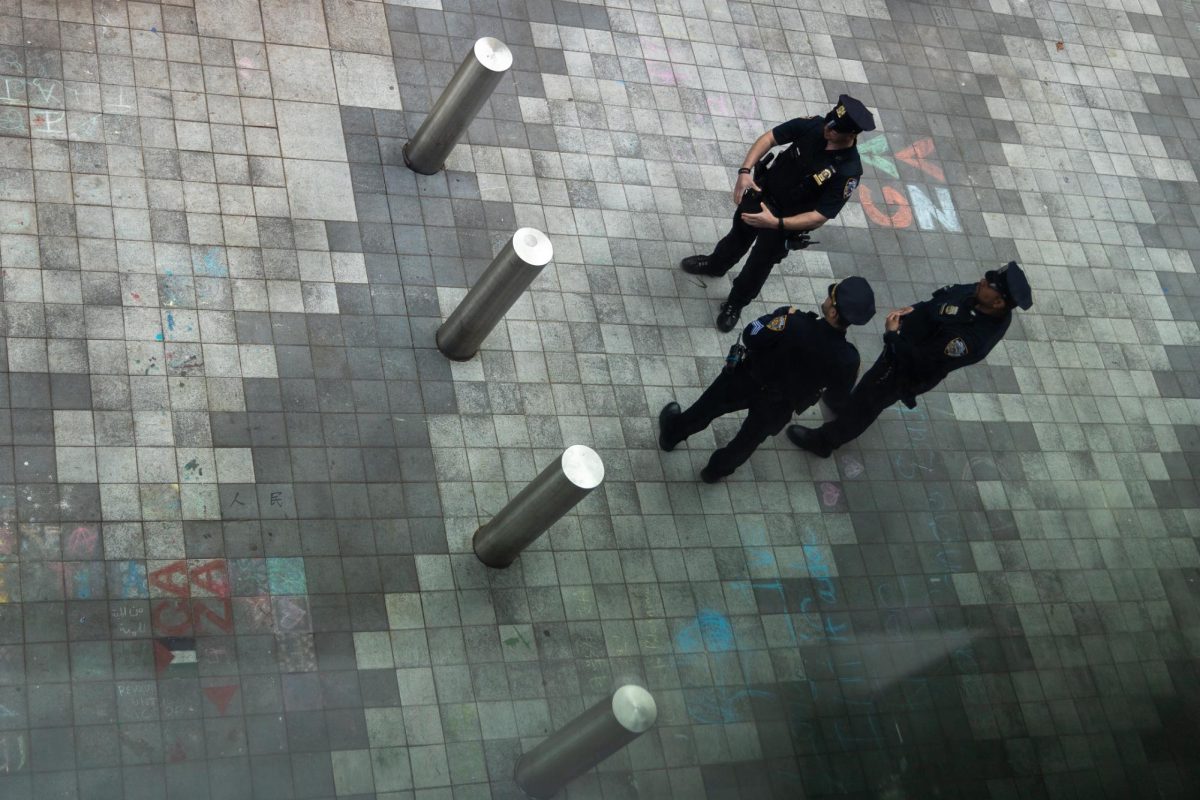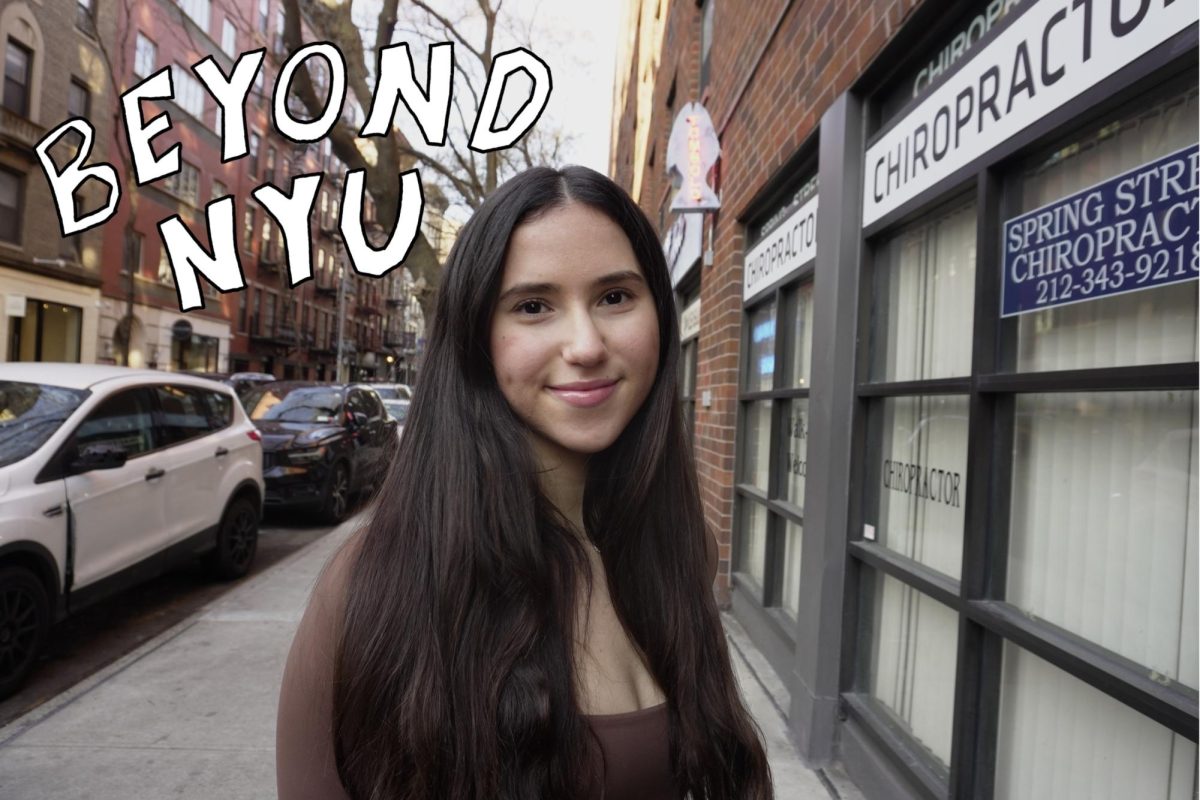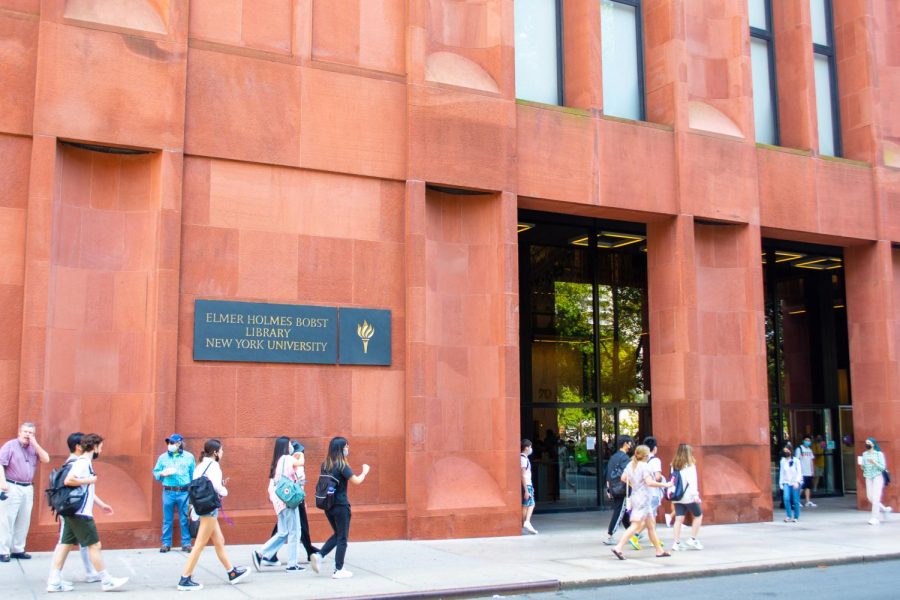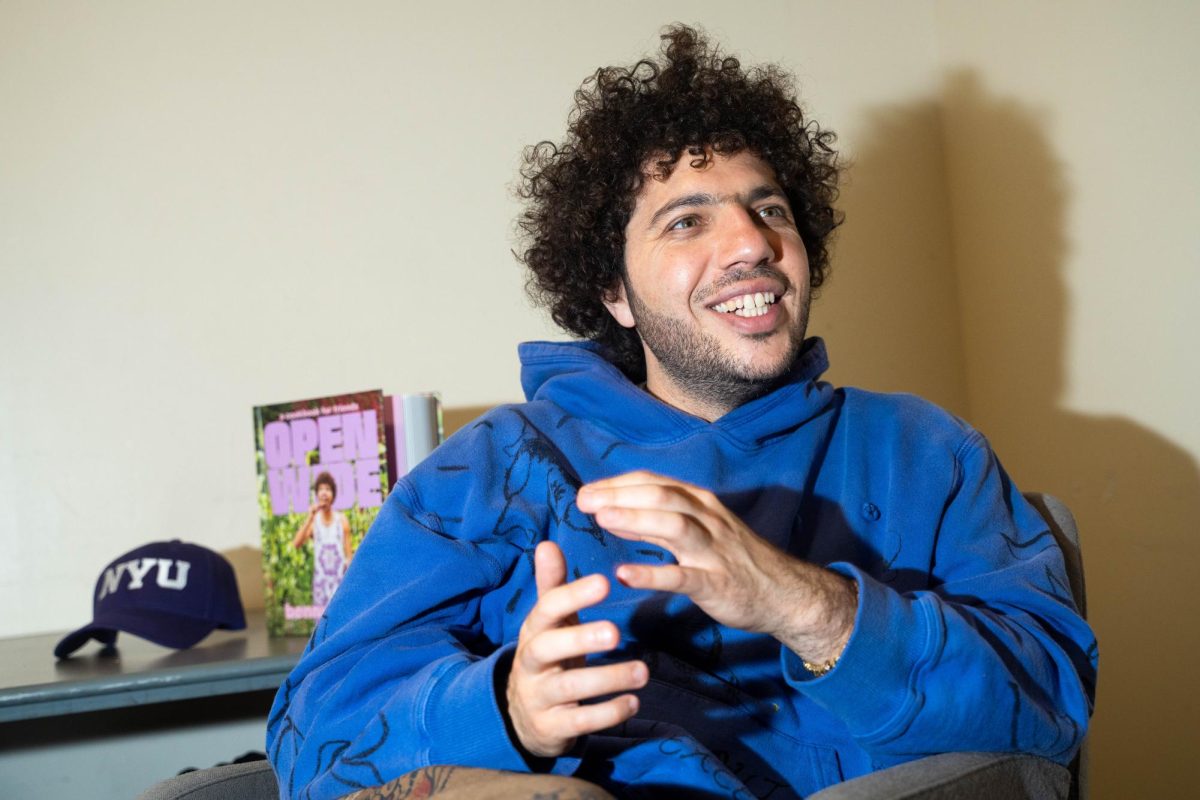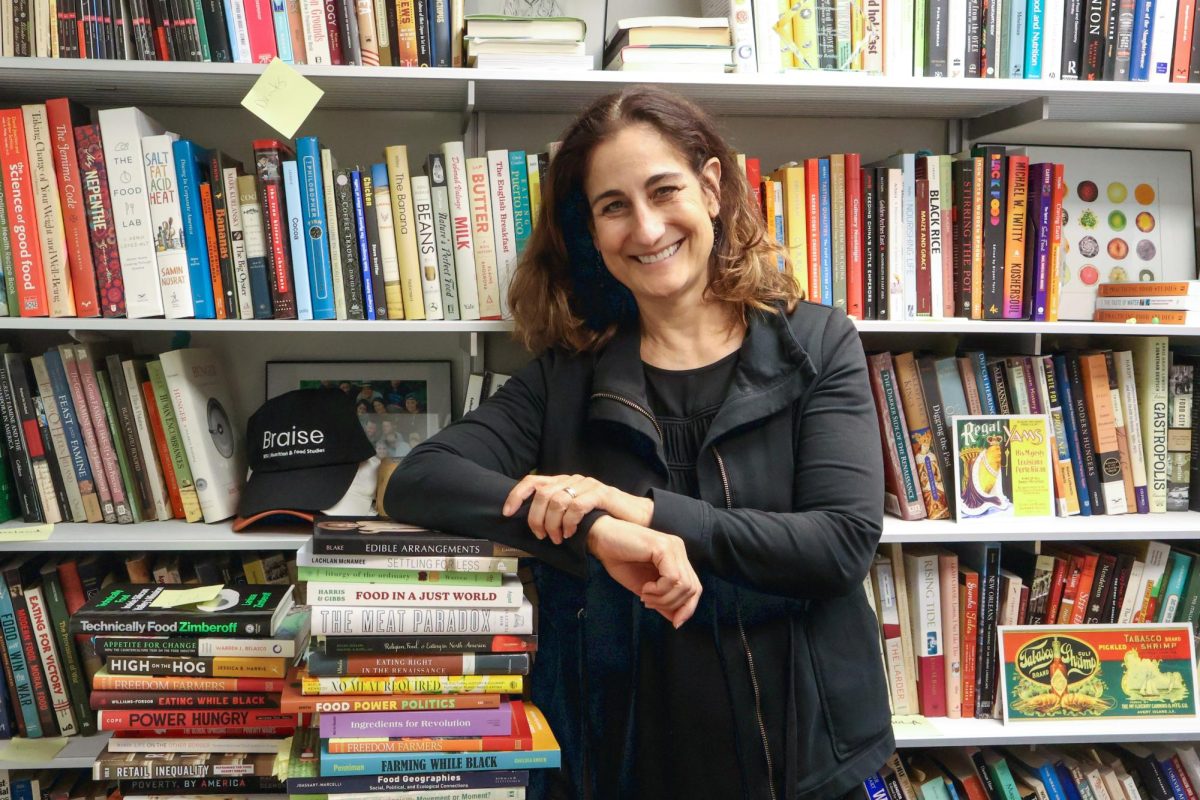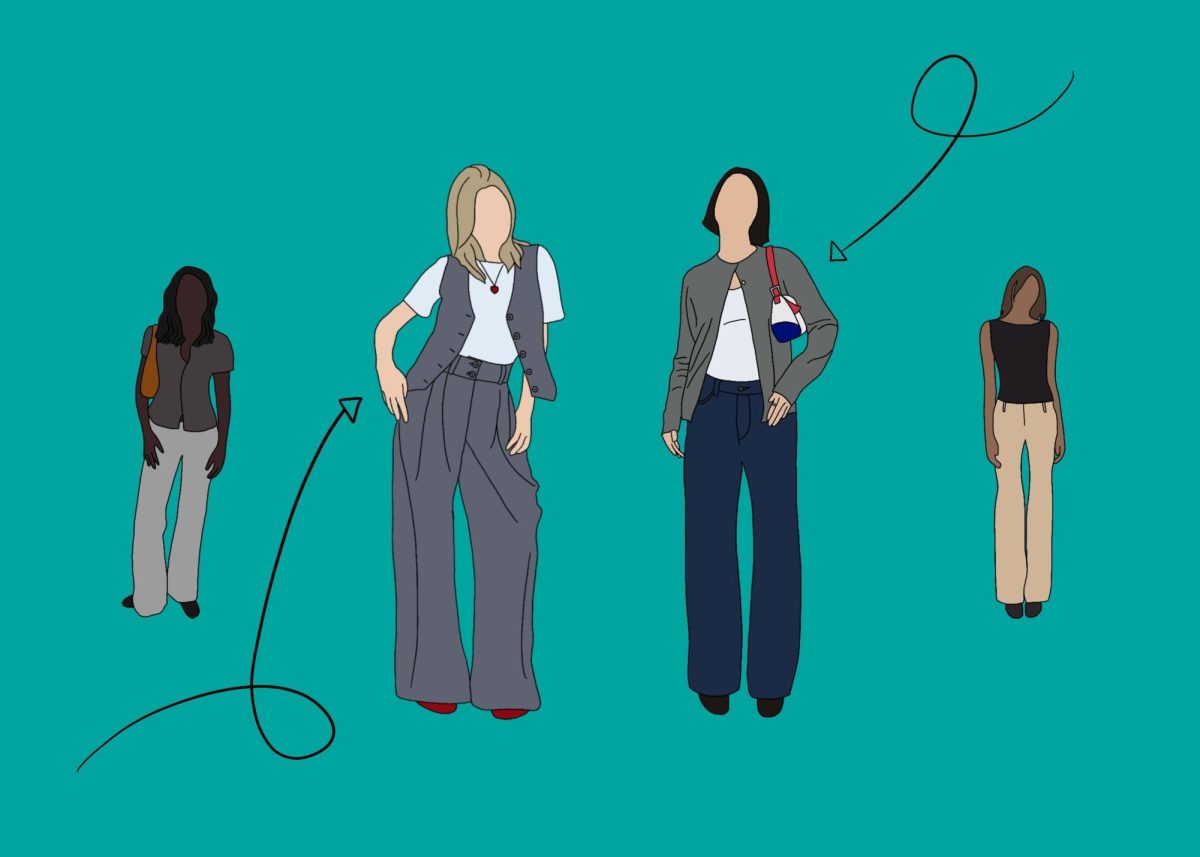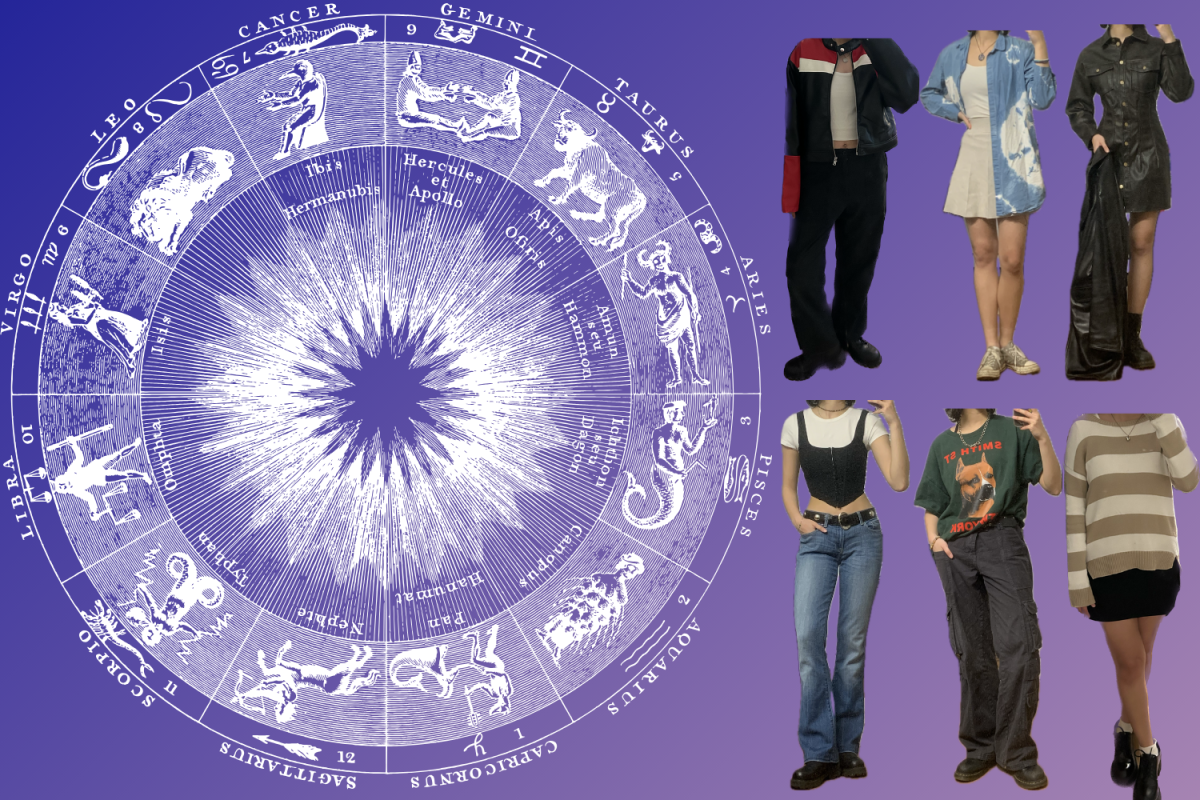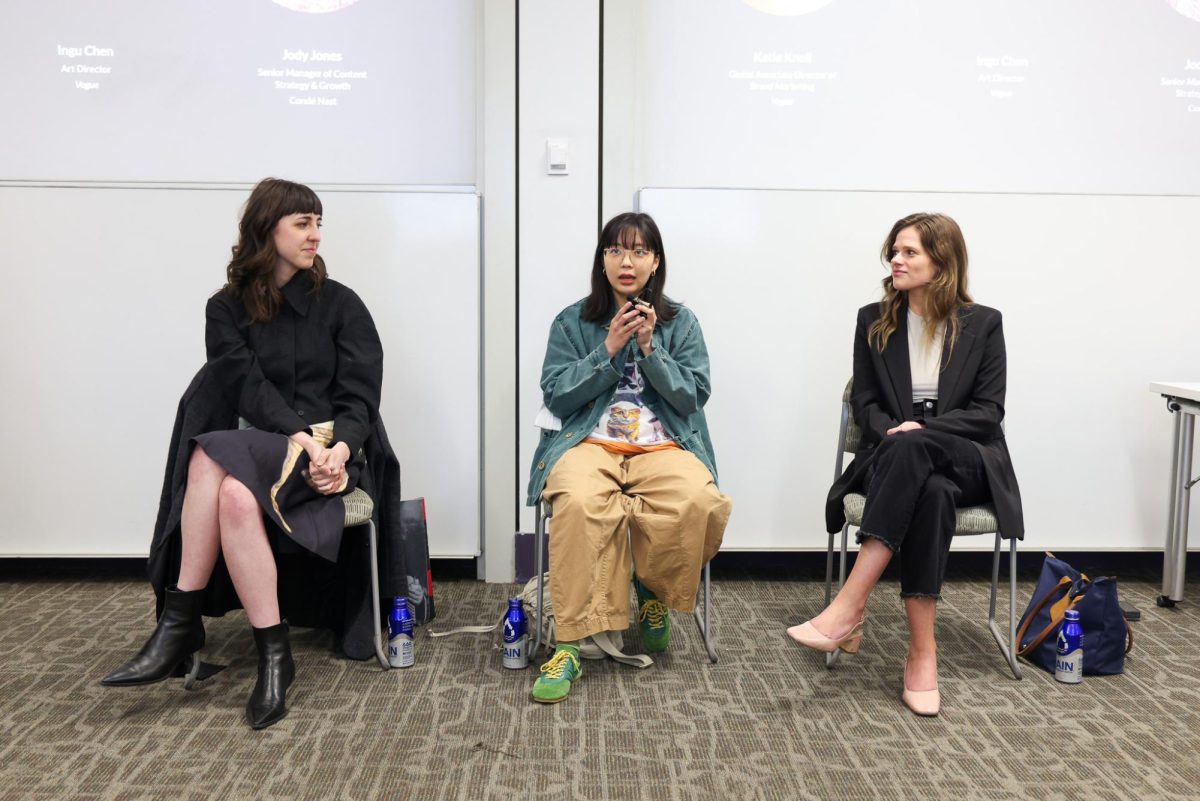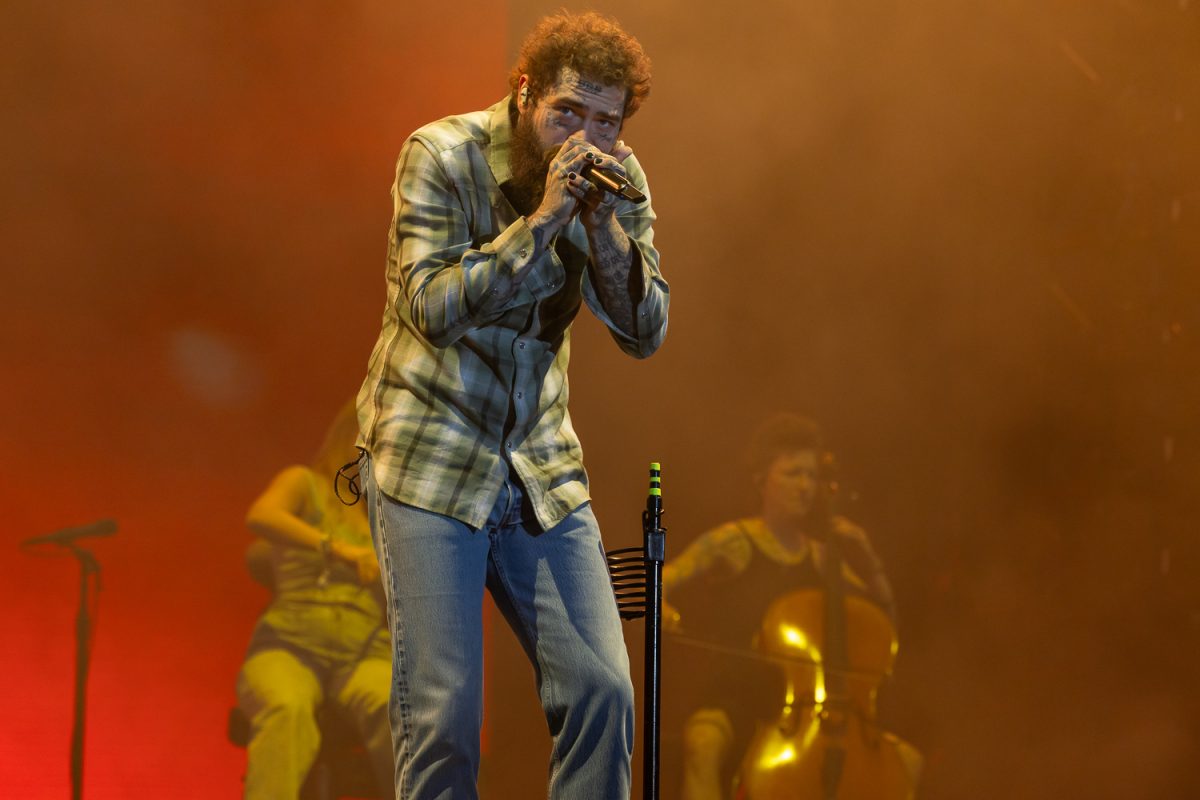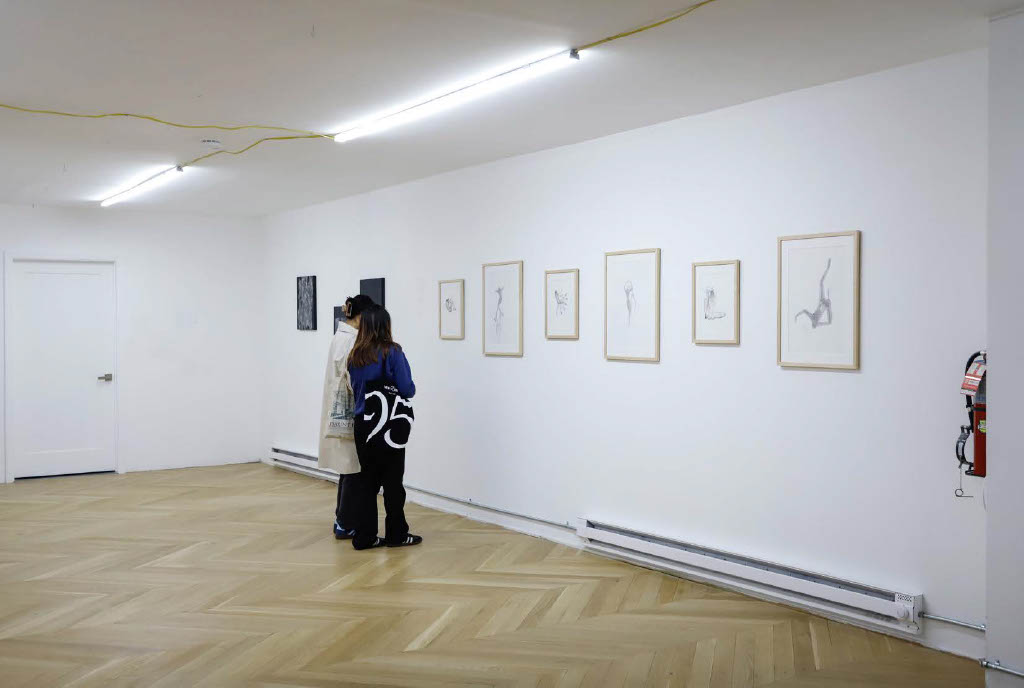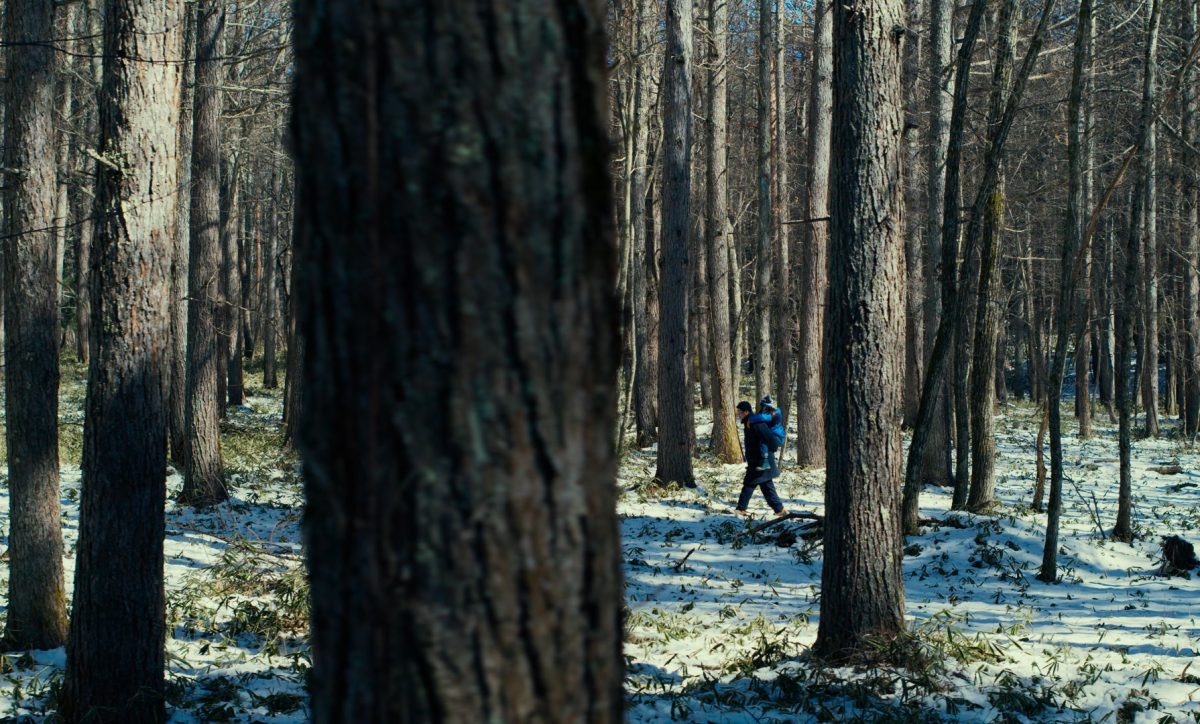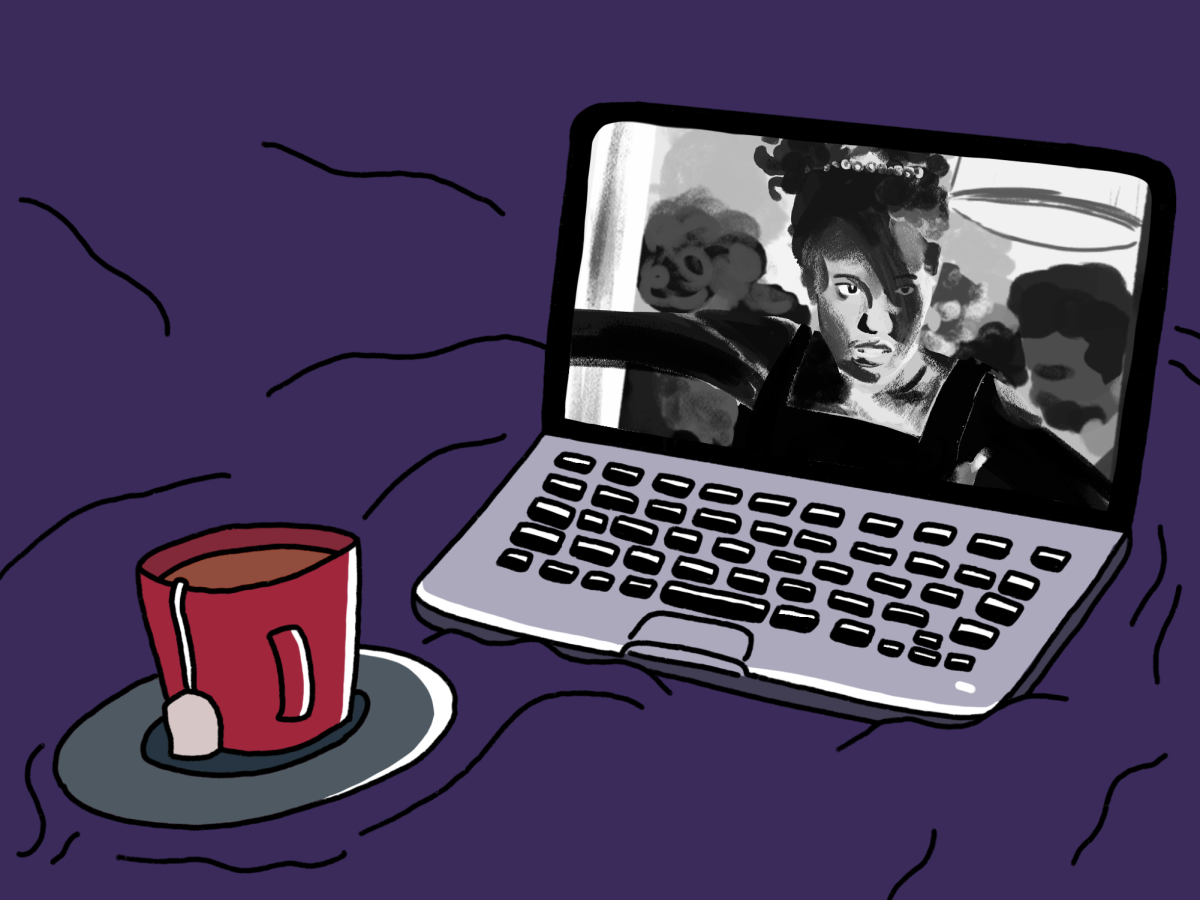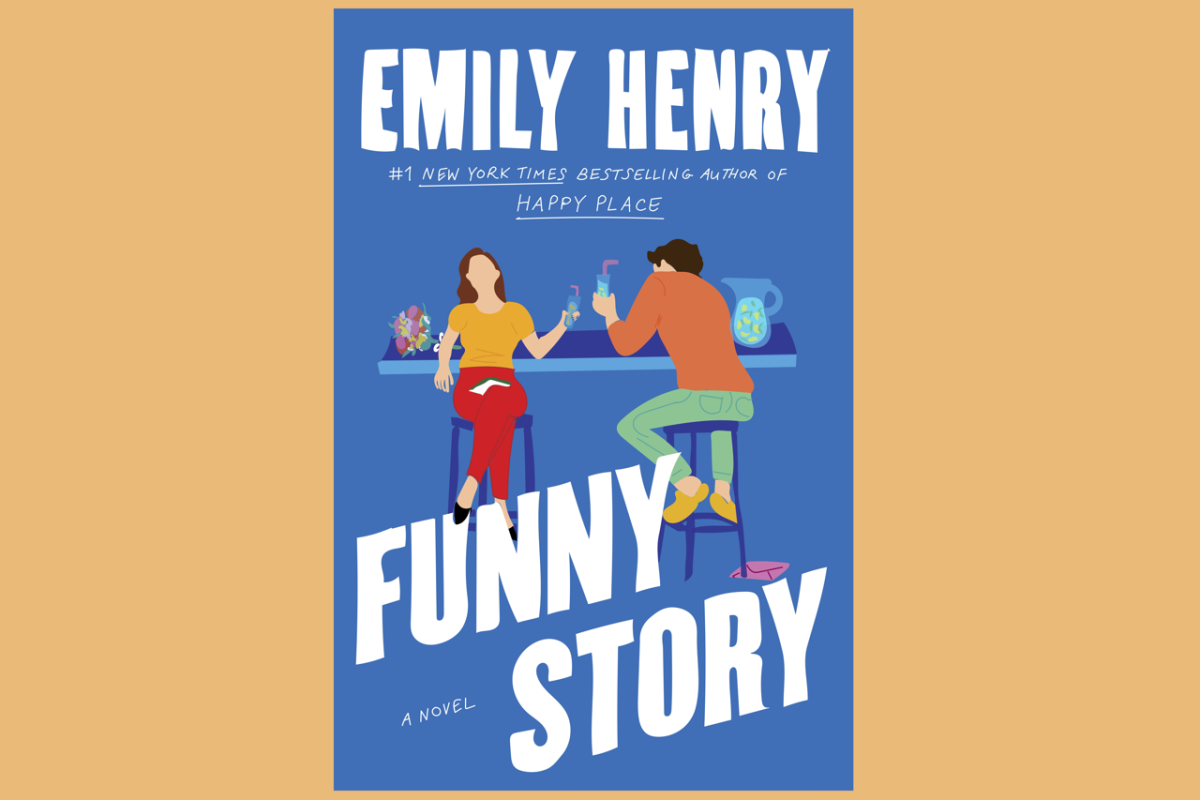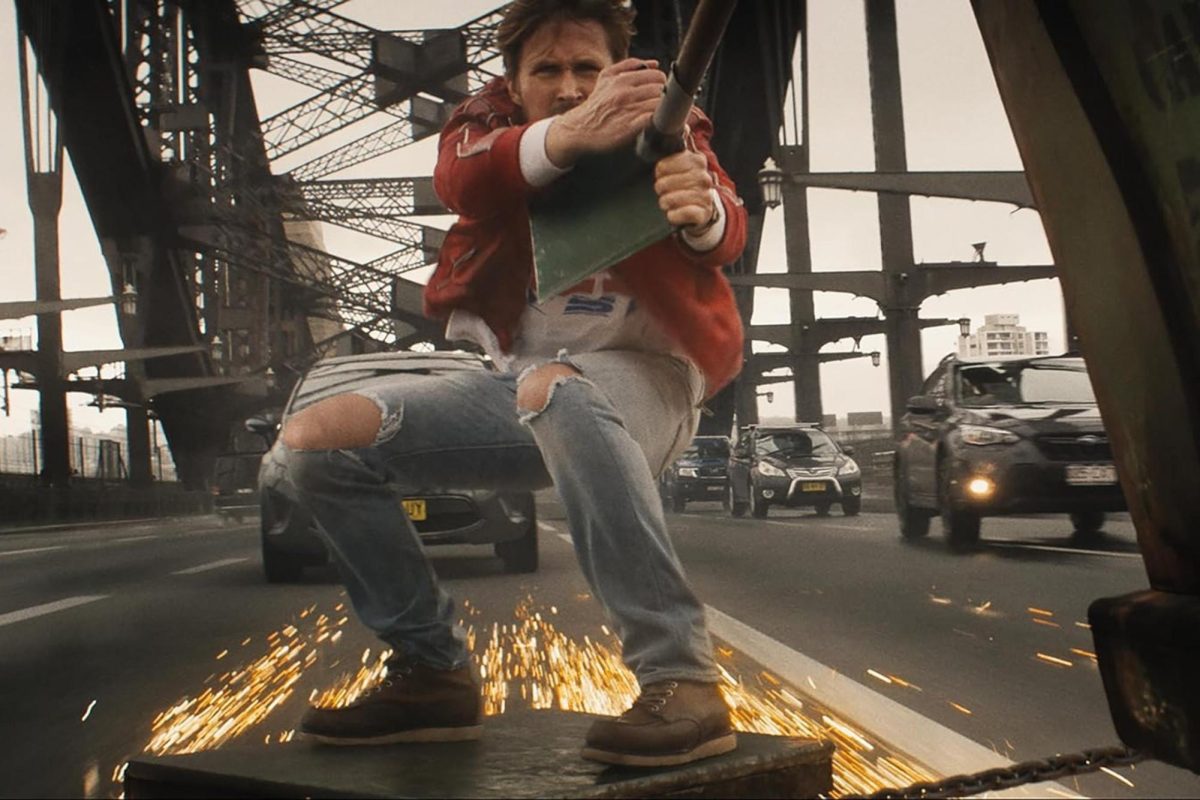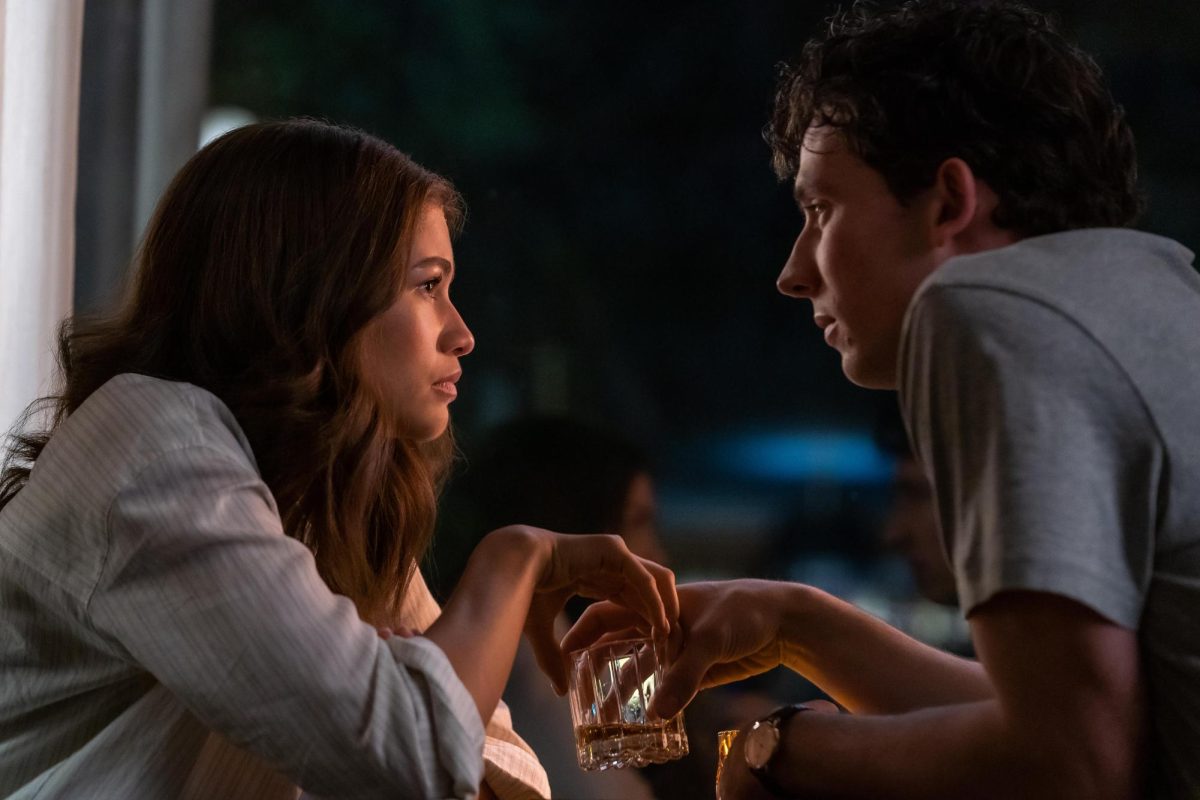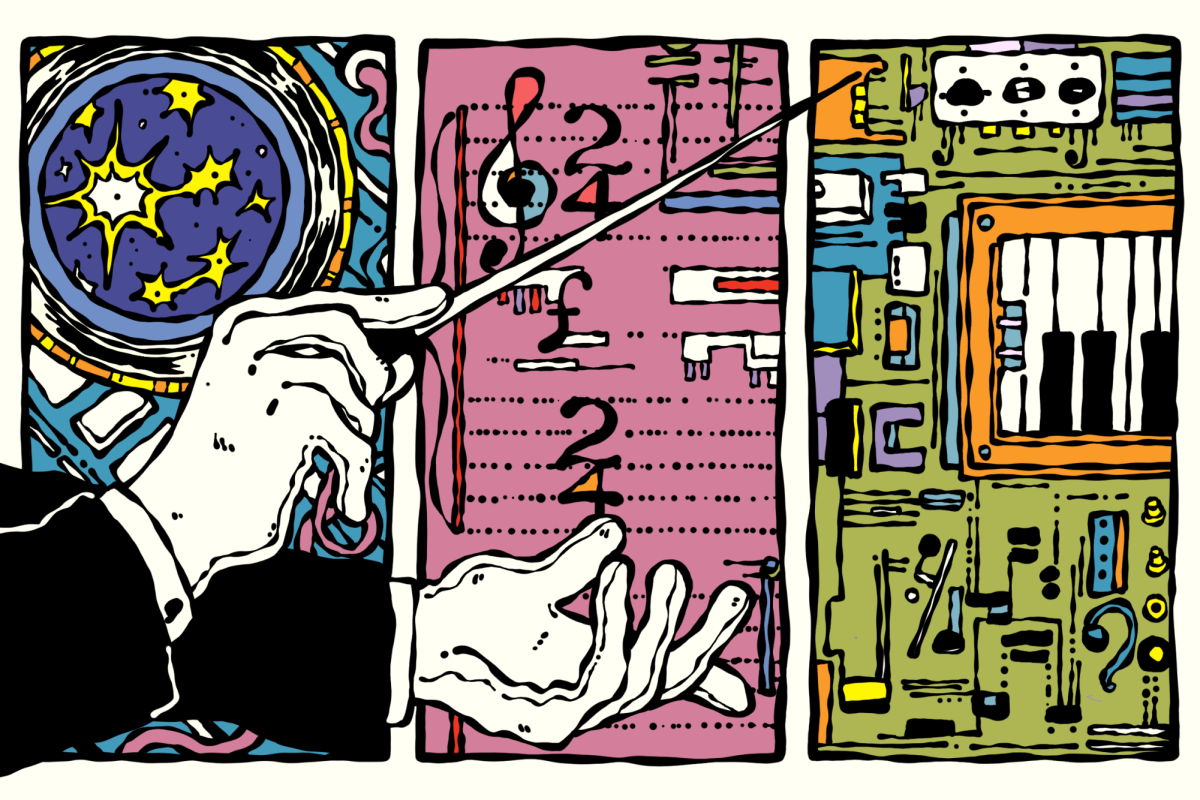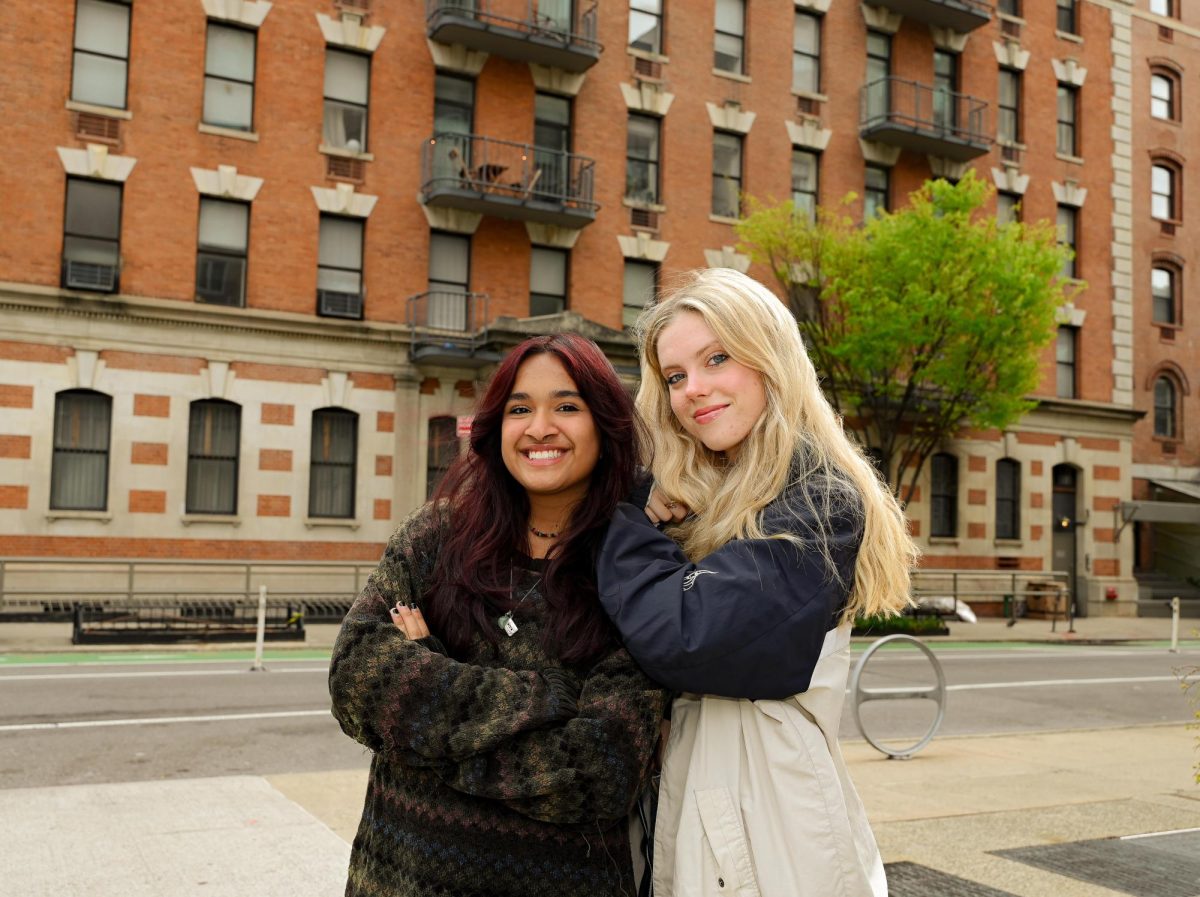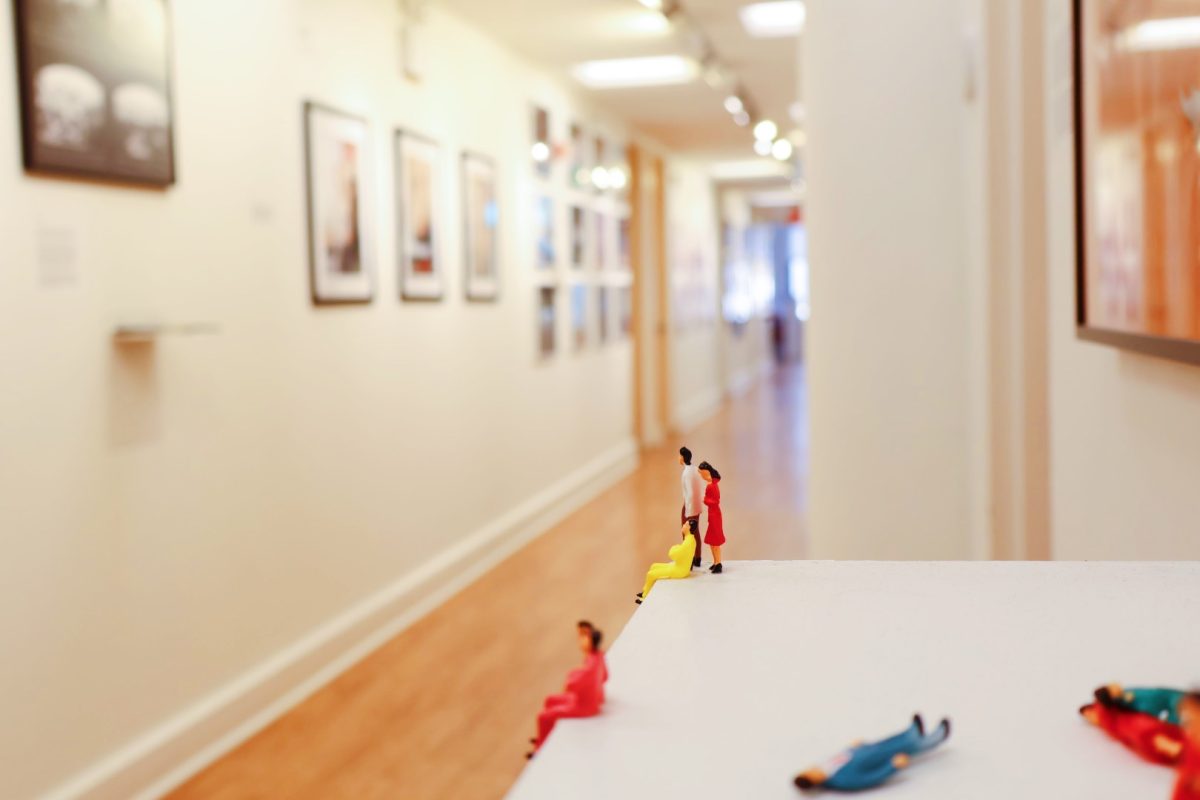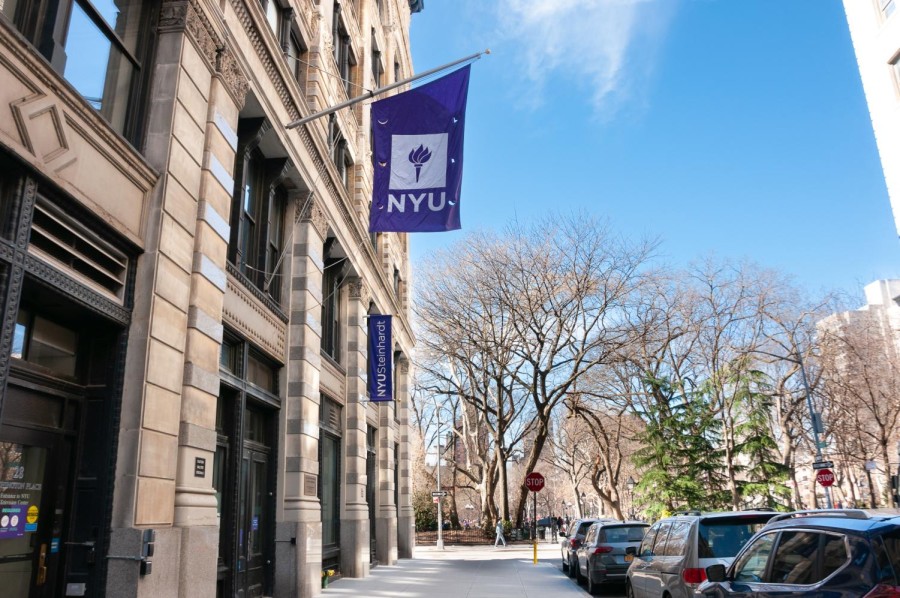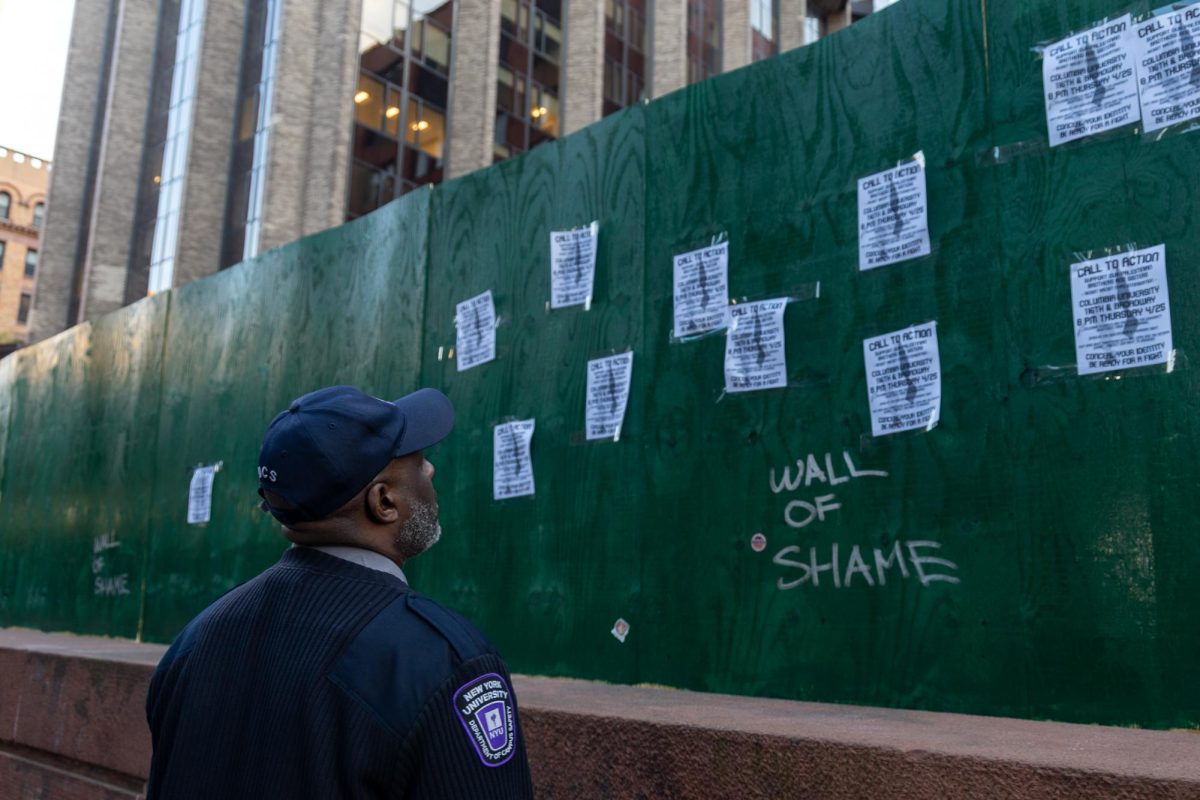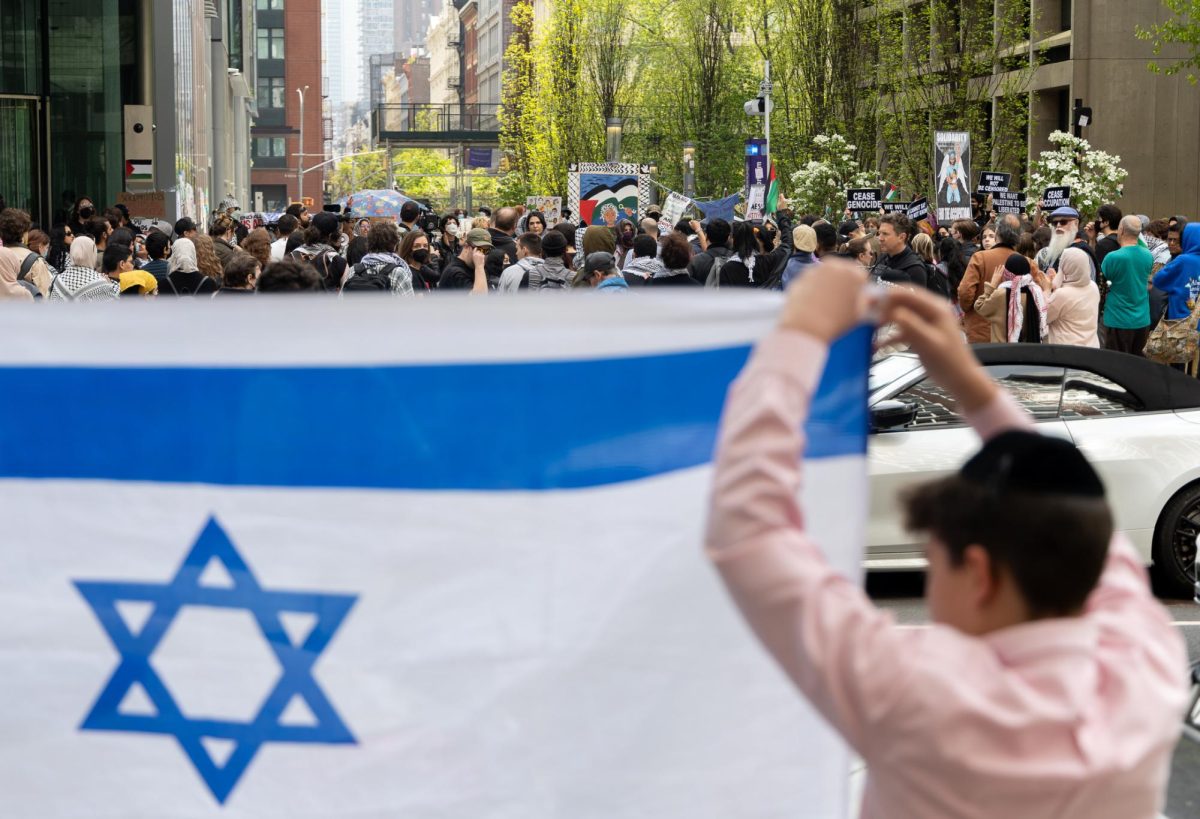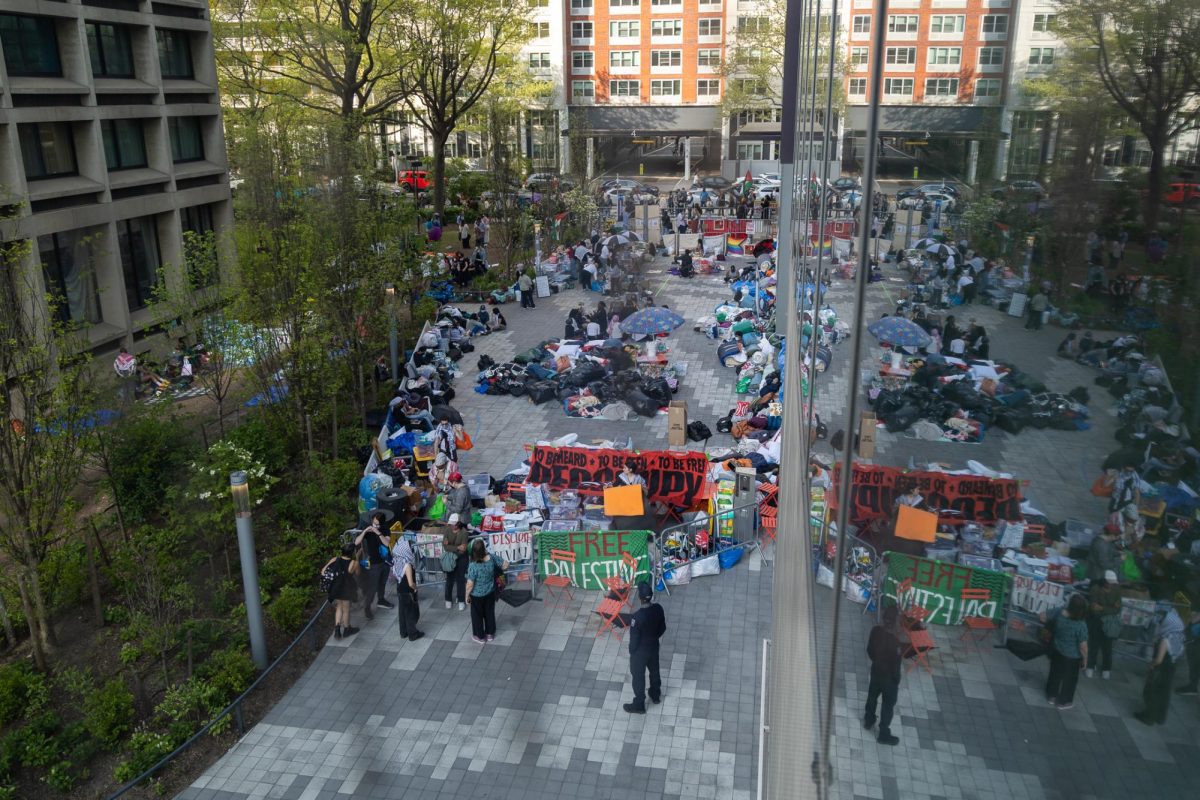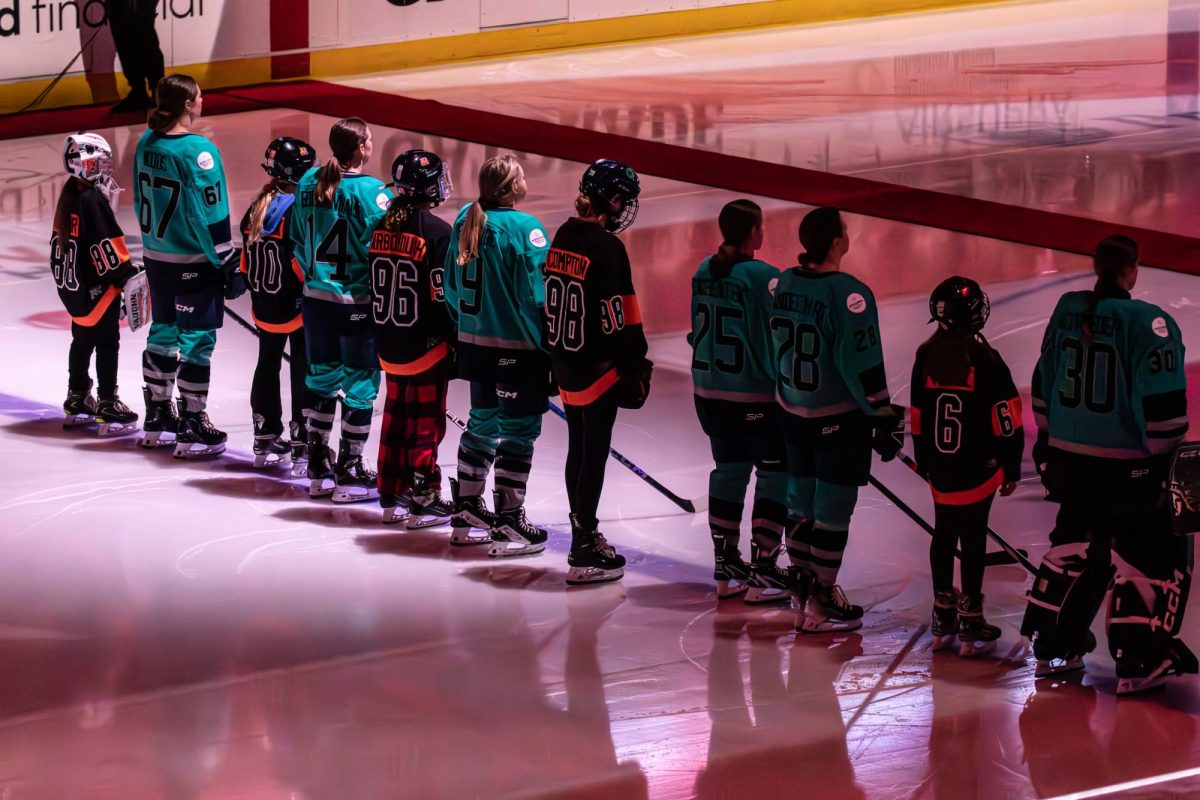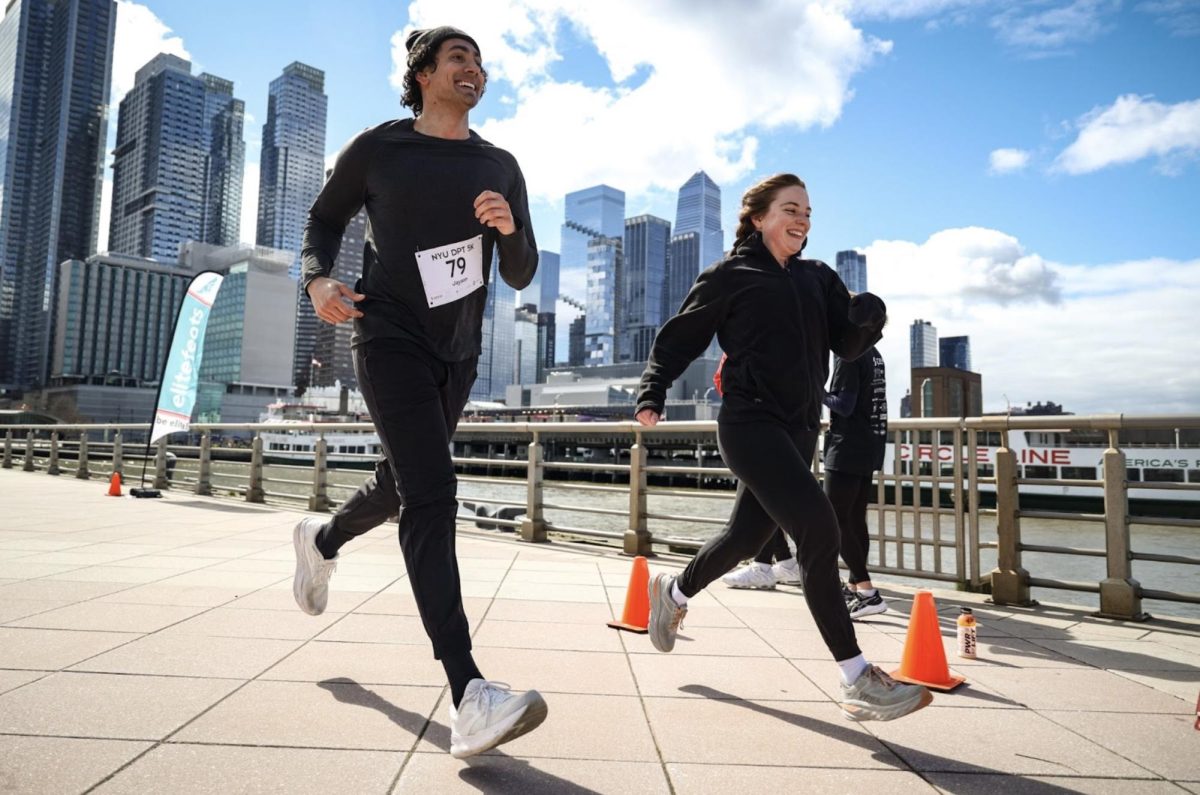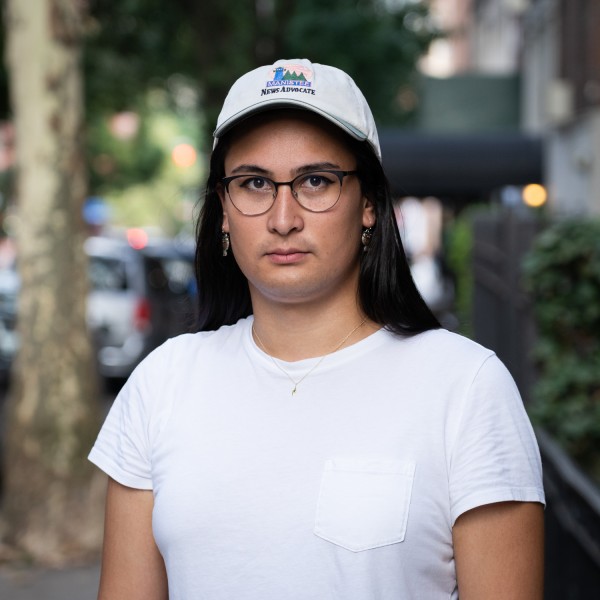‘Forgotten NYU,’ Episode 1: Ground Zero
In the first episode of a collaboration between WSN and WNYU 89.1 FM, host Alex Tey revisits Sept. 11, 2001, 20 years later.
October 13, 2021
This episode first aired on Sept. 15, 2021.
I just remember just the immense scale of the place. Like, all the steel beams were, you know, as— as high as multiple-story buildings, and I just felt very small there. It felt like, kind of, the calm at the center of the storm, in a way. Yoni Brook
This is the second of two episodes revisiting September 11, 2001. In the previous episode, we relived the events of that day with NYU alumni who were students at the time. This episode explores the weeks after 9/11: the university community’s response, lessons on getting past tragedy — and a couple 9/11 stories you might not have heard before.
“Forgotten NYU” is a production of the Washington Square News in collaboration with WNYU 89.1 FM that explores the hidden world around us. Whether it’s people or spaces, design or ideas, we’ll show you the past and change how you see the present.
Earlier this month marked the 20th anniversary of the September 11 attacks on the World Trade Center. The attacks hit close to home, in every sense, for the NYU community — the university’s Washington Square campus was less than a mile and a half from Ground Zero. This is the second of two episodes revisiting 9/11.
Credits
Host: Alex Tey
Writing, research, music: Alex Tey
Editing: Jack Peterson, Grace Wanebo
Transcript
This is Forgotten NYU, a production of the Washington Square News in collaboration with WNYU 89.1 FM. I’m Alex Tey.
Music begins [Alex Tey/aquatic songbird — “Forgotten NYU theme”]
Since so many of us here at NYU only spend four years in New York, it’s easy to never dip below the surface of this corner of Manhattan. But whether you notice them or not, the specters of the past still linger in the neighborhoods around Washington Square Park. Intentional choices of architecture and design blend back into the built environment, influencing your life in ways you might not even notice. People’s greatest joys and deepest sufferings dissolve into time, disappearing forever — except from those that go looking for them. With this show, Forgotten NYU, we’re going to give you insight into the past that changes how you see the present.
Music ends
Earlier this month marked the twentieth anniversary of the September 11 attacks on the World Trade Center. The attacks hit close to home, in every sense, for the NYU community — the university’s Washington Square campus was less than a mile and a half from Ground Zero. This is the first of two episodes revisiting 9/11.
Brian Foster, an assistant editor at WSN, was living in the Water Street dorm in the fall 2001 semester.
Just eight blocks from the World Trade Center, he was startled awake just after 9 a.m. by the second plane colliding into the south tower. He rushed out of bed and ran toward the World Trade Center. The windows in every building he saw had been shattered by the blasts, but the scene had not yet turned chaotic.
“People were running all over Water Street, but everybody was actually pretty calm,” he would tell WSN news editor Brandt Gassman for the next day’s cover story.
From Fulton and Broadway, just one block from the towers, onlookers took in the scope of the catastrophe. New York’s iconic Twin Towers were ablaze, and the human scale of the tragedy was already apparent. Foster watched helplessly as people in the towers made the unfathomable choice to leap hundreds of feet to their deaths rather than be burned alive.
“It was too much to take, watching people jump out of windows,” Foster said later that day. “Everybody I was standing around went into hysterics.”
When the south tower collapsed, Foster ran for his life.
Thousands of tons of concrete and steel cascading to earth. A loud crackle followed by tremendous roar — “the worst sound I’ve ever heard,” Foster would say. But he escaped unscathed.
Moments earlier, David Handschuh — standing just blocks from Foster — had raised his camera to his eye. The NYU adjunct journalism professor had been on the way to teach his first class of the new semester when he had heard the news: One of the twin towers was on fire. For this New York Daily News photographer, this took priority. He was known for this kind of initiative — a colleague described him as “gung-ho,” a man always on the go.
He had grabbed his camera and headed toward the scene, arriving just before the second plane struck.
Handschuh’s photos from that day are startlingly vivid. One shot looks nearly straight up at the towers — he was shooting from just 100 yards away — and shows dense black smoke violently issuing from one tower. The focus of the shot, however, is on the other. A plume of flaming debris explodes from its right side and another fireball punches out from the left — the moment that Flight 175 pierced the south tower. The moment that woke Foster in his dorm bed, the moment that the country realized that this was not an accident but an assault.
Handschuh kept shooting. With the tower on the verge of collapse, he raised his camera to his eye for one more shot. But he never pressed the shutter: “Something in the back of my head said ‘run, run, run,’” he would later tell WSN.
As he sprinted away, the tower collapsed. The force of the collapse cast him down the street, covering him in ash and breaking his leg in two places. Rescuers dragged him to shelter in a deli, not knowing when they would have a chance to escape. Just as he reached temporary safety, a mangled chunk of the collapsed towers landed right where he had been lying.
Handschuh described laying there on the deli floor as an out-of-body experience. He wondered if he was only watching a movie, only seeing himself injured and dusty on some screen. He later told associate news editor Michelle Blackley. “I just wanted to stop it and get up and go for popcorn,” “But of course I couldn’t.”
His rescuers eventually managed to carry him to the Battery Park area, where authorities would soon establish a base of operations. After being treated for his broken leg at a New Jersey hospital, Handschuh was grateful to have survived. At the same time, he remained confident that he would still try to chase down big stories, but for now he was working on small steps.
“Today my goal was to get out of bed and put both feet on the ground. Maybe tomorrow I’ll take a few steps.”
While Handschuh was sheltering in that deli, others fled northward. Soot-covered refugees, their eyes bloodshot, rushed uptown. One WSN editor described hearing “crying, anguish and prayers” on the city streets.
Brandt Gassman, the news editor who interviewed David Foster, described the scene.
“By 10:45 a.m. smoke and soot covered the entire southern skyline following the collapse of the north tower of the complex. East Village residents and citizens fleeing from the downtown chaos stood in lines of ten or more to use payphones on Third Avenue.
“At Chatham Square in Chinatown, men in business suits caked in gray soot huddled at benches in the square. One man whose entire face was obscured by soot had burn marks on the arms of his tan suit.
“As hundreds of people made their way up Water Street under the Brooklyn Bridge, smoke and soot floated over the downtown area. The soot collected throughout lower Manhattan, in some places two inches deep.
“At the intersection of John Street and Gold Street, only five blocks from the disaster site and three blocks from the Water Street dormitory, two employees from the Jubilee Market wearing makeshift masks distributed water to people on the street.
“Six blocks away, at the foot of the Brooklyn Bridge and City Hall Park, torn and singed financial papers from the WTC littered the ground after being blown through the air from the disaster site. A woman’s shoe lay discarded in the gutter of the street.”
Klein: I was actually enrolled in a photojournalism class in the journalism school at that time.
Jori Klein was a photojournalism student and a photographer with WSN that semester. Her assignment for that class that week had been to photograph a farmer’s market. Having never been to the World Trade Center farmer’s market, she decided to go there.
Klein: I wrote it on my calendar… I ended up, that morning I slept in, like, you know, typical college student.
She woke up around half past eight that morning to a call from her friend — there was smoke downtown, the friend said. It probably wasn’t a good idea to go down there. Klein had a south-facing window in her dorm that year.
Klein: And so at the time, I lived at Third North — Third Avenue, 11th Street. And I literally opened up the blinds. And there was the picture that, like, I think they ended up publishing in the paper.
The September 12, 2001, issue of the Washington Square News does have her photo on the cover: the Twin Towers, standing, but barely. The towers, previously immovable, now looked fragile — both bore dark metallic wounds, and clouds of inky smoke billowed from the mutilated skyscrapers. Klein could do nothing but take pictures.
Klein: “And it was one of those things where it was so horrifying, but amazing. And I was just like, I need to take pictures of this and kind of think about it later.”
Klein and another WSN photographer tried to get downtown — they were already south of the 14th Street checkpoint — but they couldn’t get past Canal Street. Instead, she went to Union Square, where a spontaneous memorial was already forming.
The shock and grief the city felt that day was, for many, paired with ambivalent relief — there are countless stories of near misses, people who were supposed to be in the towers that day and survived by more or less random chance.
Klein: I remember that night after we— after we made the newspaper. Like my— when my role was done, I hopped on a train out of Grand Central, it was probably like 12 or 12:30 at night. And I was getting out of the city like, you know, we were all very overwhelmed, and a good friend of mine, her uncle lived in Westchester. So she’s like, ‘Come, you know, stay the night in Westchester with me just to get out of the city.’ And there was— very few people on the train. And there was a guy sitting across from us. And, of course, we all, you know, are processing what we’re going through. And this guy had worked at Cantor Fitzgerald. I forget what floor their offices were located on but they basically lost everyone who worked for them. They were above the a hundredth floor, I think, in one of the towers and this guy got a call from someone who forgot their badge that day. And so he had to go down to the ground floor to let that person in. And as soon as he got to the bottom, he walked out. And they heard this like incredible thundering, and it was the first plane hitting the tower. And he and the person just looked at each other and ran. And he said, ‘I’m the only person in my office who I know is alive right now.’ And I— that’ll forever stay with me, that story.
Earlier that night, Klein and her colleagues had been in the WSN office finishing up the next day’s issue when a student they had never seen before walked in the door.
Klein: He had had an internship at the Washington Post that summer, I believe before and he knew a lot of wonderful photographers…
Brook: I called the Washington Post, and they said that they needed me to go back down to the World Trade Center site.
Klein: …and he had credentials.
Brook: I printed out, like, a kind of, like, a fake press pass that said the words, like, ‘press, all-access…’
Klein: And so he had managed to get down in ground zero that day.
Brook: And— and then at around midnight, I started— I went back down and spent the night in the— in one of the buildings photographing the rescue efforts that were happening that night. So that— that was the day. Didn’t— I didn’t sleep that night.
Documentary director Yoni Brook was a Gallatin sophomore during that fall 2001 semester. On his way to class that morning, he had seen a group of students gathered outside the building that’s now called the Silver Center. They were looking south, toward downtown. The World Trade Center was on fire, but they didn’t yet know what exactly they were looking at.
Brook: I think one of them told me that there had been a small airplane that hit the top of the World Trade Center. And I just thought to myself, ‘That’s crazy. But I have a class to go to.’
Brook had spent the summer of 2001 interning at a newspaper in Memphis, Tennessee, photographing breaking news — car accidents, house fires, the trauma of everyday life. He was looking forward to just being a student again. “No big deal,” he thought to himself as he headed to class while the north tower burned, figuring that the firefighters would have the fire under control before long. Not until an hour or so later would he realize what was going on.
Brook ran back to his dorm on Third Avenue. When he got to his room, his roommate told him that he had gotten a voicemail on their landline. It was the Washington Post.
Brook: I just ran out my door and tried to get a cab. And I think a cab took me as far as Canal Street. And then I just started walking from Canal Street. And everybody was, like, going in the opposite direction, like fleeing the site. … I didn’t know anything. Somebody said the president was dead; the White House had been hit. And I just figured like, this was the thing that was happening in my backyard.
The towers had fallen, but the area hadn’t been fully cordoned off yet. More rescue workers would not arrive until that afternoon. Like the ash that blanketed the streets and buildings, an unsettling sort of calm laid over downtown Manhattan in those few hours.
Brook: I kept getting closer to the World Trade Center site, and probably at around 11:30 or 12 I had made it there. And it was very quiet. And still, in the middle, there were no— there were a few firefighters walking around. But it was like an eerie quiet.
Brook accompanied the firefighters as they searched for survivors and victims. In the hellish landscape of the mangled skyscrapers, the only sign of humans — anyone who had been in the towers — were blue tarps covering the remains of the dead.
Brook: Just— I just remember just the immense scale of the place. Like, all the steel beams were, you know, as— as high as multiple-story buildings, and I just felt very small there. It felt like, kind of, the calm at the center of the storm, in a way. Just for the first couple of hours after it happened, you know, there was just— there was just dust everywhere. There were firefighters, who were like, we were— I was with them walking on all the beams. You know, we were walking over the whole site trying to, like, understand — where there people there, could we get to them? You know, I didn’t— I didn’t see much evidence of, like, human people that were hurt there. And we saw some tarps covering human remains. But it wasn’t— it just had this, like, stillness everywhere. And, you know, just like a powder covered everything, and I still have my clothes from that day — they’re in a plastic bag somewhere in my parents’ house because the smell of those clothes, you know, it almost felt, like, volcanic, or something, in those clothes. So I kind of just kept that. Somewhere in my closet. I haven’t— haven’t looked at it or smelled it in a long time.
Music begins [Alex Tey/aquatic songbird — “Forgotten NYU theme”]
You can find the Washington Square News online at nyunews.com and @nyunews on social media. WNYU is on the air on 89.1 FM from 4 p.m. to 1 a.m. on weekdays and on the web 24/7 at wnyu.org. Thanks for listening.
Music ends
Contact Alex Tey at [email protected].


